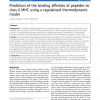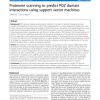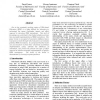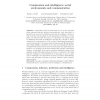19 search results - page 3 / 4 » Understanding Prediction Limits Through Unbiased Branches |
BMCBI
2010
13 years 5 months ago
2010
Background: The binding of peptide fragments of extracellular peptides to class II MHC is a crucial event in the adaptive immune response. Each MHC allotype generally binds a dist...
BMCBI
2010
13 years 5 months ago
2010
Background: PDZ domains mediate protein-protein interactions involved in important biological processes through the recognition of short linear motifs in their target proteins. Tw...
HICSS
2003
IEEE
13 years 10 months ago
2003
IEEE
Due to the constantly evolving nature of Web-based Education (WBE) it is often difficult for educators to understand the issues, challenges, impact, and effort required to introdu...
AGI
2011
12 years 9 months ago
2011
Compression has been advocated as one of the principles which pervades inductive inference and prediction - and, from there, it has also been recurrent in definitions and tests of...
GIS
2010
ACM
13 years 3 months ago
2010
ACM
Many researchers throughout the world have been struggling to better understand and describe Spatial Data Infrastructures (SDIs). Our knowledge of the real forces and mechanisms b...




